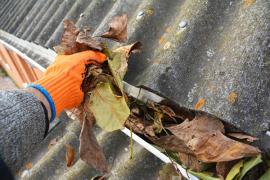2020. Shall we say 2020 was a year to remember or one to forget? Camps across the country are even still trying to decide as leadership teams dig deeply to identify how they can shield their organizations from such devastating hits in the future. Even as camper/parent expectations have changed over the years, COVID-19 presented new challenges that very few ever imagined. But now that program, planning, and recruiting teams are devising ways to soften future enrollment [and the associated tuition] downturns, what does the facilities team have to do?
Plenty.
Throughout this column’s nearly 20 years, we have encouraged facilities staff to engage with program staff early and often as new offerings are being developed. “We’ll figure it out as we go” has seldom delivered the most efficient, cost-effective, or attractive solutions. Now more than ever, the property staffs’ insight into government processes (such as construction permits), soft costs (power, for example), hard costs (construction), and site limitations (such as available potable water and sewage disposal capacity) will all play directly into the success or failure of new camp-sustaining programs. It will be up to you to support these proposals with information and useful insight that nobody else in your organization is likely to have or even considered. Let’s look at some ways that might be done.
Experience Is the Best Teacher
Not long ago, it seemed that bedbugs were the unbeatable scourge for camp property managers. Delousing systems and tools appeared to be mostly targeted at properties that were constructed and operated differently from camps. For example, insecticidal soaps and detergents are great for smooth surfaces (such as those found in hotels), but not nearly as effective on rough surfaces like plywood bunks. Disinfecting COVID-19 from those surfaces is much the same.
Even putting the question of hard-surface transmission aside, parents and campers expect that thorough disinfection will be the new norm. How have the facilities been adapted to deliver? To seal every sleeping space surface seems like a gargantuan task, but is it really when every camper’s safety is so important? The inevitable upkeep questions remain.
- Do we coat the surfaces, and if we do, what with? Alkyd paint? Polyurethane?
- What wears the longest and is most abuse resistant?
- How will we get graffiti off?
- How will we contend with the inevitable carving and idle vandalism?
- Should we finally sheath the interiors with sheetrock, drywall, or fiberglass paneling?
- Are there code concerns (particularly fire and ventilation) that may come into play?
- What can our insurer suggest that might lower our premiums?
These challenges have been tackled successfully in bathrooms. For decades, those hard surfaces were cleaned, scrubbed, and disinfected with great success. Ask yourself what has been done there that could translate to the living space and what adjustments might be necessary to make that solution work really well.
In short, the bedbug “craze” was more than just a headache. It was a wake-up call and a teachable moment. Lessons learned from that can be applied to the predicted new normal. Now is the time to plan for new, smarter, and more flexible facilities.
The Distancing Challenge
What about separation? This is a considerable challenge, because the camp experience has long been about human interaction and physical contact. It remains to be seen how camps will address this in the program spaces, but the facilities will still need to provide personal space for each camper. For sleepaway camps that’s bunk space. So, in addition to the disinfection questions, adjustments to camper density in everyday situations — sleeping, washing, dressing — will be required.
Long ago, the fire code dictated what the maximum occupancy for a camper cabin would be, but COVID guidelines are currently calling for set distances between individuals. What might that do to the occupancy of each cabin, and what is camp’s new capacity by bed space? For that matter, what is camp’s capacity by dining hall seating? While multiple meal seatings can allow more campers through, how does that square with the occupant bed space? “Hot bunking” (where several individuals share the same bed) might work well on a naval vessel, but parents are likely to frown on the practice, even with the best disinfection.
Along that same line of thought, does a second shift of campers outside the dining hall need seating and space to hang out while they’re waiting to eat? What about foul weather? Will a tent work to keep them dry? Maybe. How big does that tent need to be if we’re talking about “maintaining distance,” and where will the rain runoff go? If the tent is too close to the dining hall, the water could head right into the crawl space or foundation.
Perhaps it’s time to build that outdoor pavilion adjacent to the dining hall. Maybe the arts and crafts shack should get that overdue expansion. Perchance all the under-cover/indoor program spaces need to be reviewed for potential necessary changes to building size or occupancy. Whatever needs to happen, someone should be thinking about how it can happen, what it might cost, and what the effects may be on adjacent facilities.
All That Waste
What needs to happen to all the waste that’s being generated through pandemic procedures? Every facility manager has already endured the clogs, backups, and increased maintenance associated with personal wipes being flushed. However, consumption of flushable wipes is being dwarfed by that of disinfecting wipes, which were never intended to be flushed at all. To make matters worse (from a waste disposal perspective), the internet has plenty of instructions on how to make disinfecting wipes from paper towels. The problem of sewage disposal has grown exponentially in a year’s time. But what can be done? Educate camp guests with signs in restrooms while providing many more cans for waste wipes and used disposable masks. As this is really a social issue, the entire staff needs to be part of the solution to keep pipes flowing and camp litter free and sanitary.
If camp is going to survive these difficult times and thrive, the program offerings must adapt. Stewards of the property and its improvements must plan now for what’s required to support that new normal. This is the time to think ahead, just as the other teams are doing. Where it might have seemed that facilities took a back seat in the past, nobody gets to be a planning passenger anymore.
Property managers: engage with your colleagues and peers. Share what you know — because what you’ve learned is invaluable. Imagine how those lessons can be extended to today’s new situations. Listen. Think. Process thoroughly. And then enthusiastically join in the effort to provide that best “new experience” for the new normal.
Rick Stryker is a professional engineer who is passionate about camps and the opportunities that they provide. He’s always delighted to answer email questions at [email protected].




